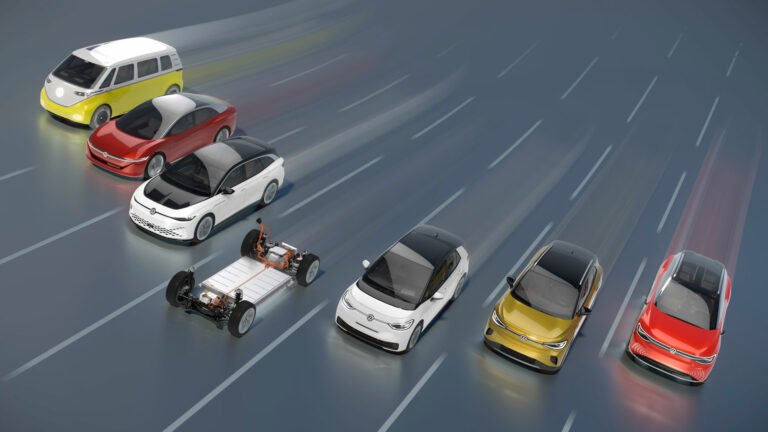Overview of Volkswagen’s MEB Platform
The Volkswagen Group’s MEB (Modularer E-Antriebs Baukasten) platform, translated as ‘modular electric-drive toolkit,’ is designed to underpin a range of electric cars and SUVs. Initially, the company expected 10 million vehicles across 300 models to use this platform. While those numbers haven’t been reached yet, numerous models are currently based on the MEB platform.

Early Concept and Production Models
Volkswagen introduced several concept models before launching production vehicles on the MEB platform. The ID. Buggy concept at the 2019 Geneva Motor Show demonstrated the platform’s flexibility. The first production model was the Volkswagen ID.3, revealed at the 2019 Frankfurt Motor Show.

Expansion Across Volkswagen Group Brands
The MEB platform has been utilized by various Volkswagen Group brands. The Skoda Enyaq iV was the first non-VW model to use this EV architecture, launched in 2020. Audi followed with the Q4 E-Tron in 2021, marking their fourth fully electric model.

Diverse Models Using MEB Platform
The platform has enabled the production of diverse electric vehicles, from compact SUVs like the Cupra Tavascan to the Volkswagen ID. Buzz MPV. Ford has also partnered with Volkswagen, using the MEB platform for models like the Explorer EV.

Future Plans and Concepts
Volkswagen continues to develop new models and concepts based on the MEB platform. The ID.EVERY1 concept is expected to be a more affordable option, potentially costing less than £17,000 when it reaches showrooms in 2027.

The MEB platform has been instrumental in Volkswagen’s transition to electric mobility, offering a flexible and efficient base for a wide range of electric vehicles across different brands and segments.



